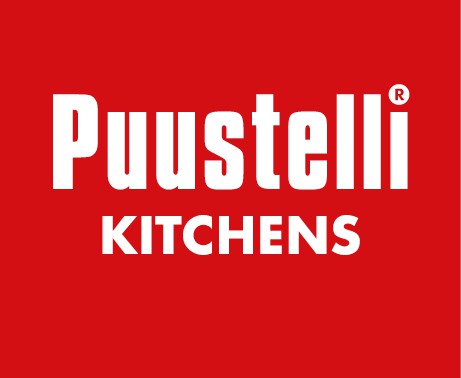Table of Contents
Meet Justin Juntunen, founder of Cedar + Stone Nordic Sauna
We love introducing our clients and followers to other Nordic companies—and it’s even more a delight when one of those companies shares our values around sustainability and good design. That’s why we’re very excited to introduce you to Justin Juntunen, founder of Cedar + Stone Nordic Sauna in Duluth, Minnesota.
The company launched in 2020—a mere six weeks before the COVID-19 pandemic shut everything down. But since this company is something that Justin views as a calling in his life, he wasn’t deterred when he had to pivot and rethink his business model so early on.
We recently had the opportunity to sit down and chat with Justin about how the company got its start, what experiences and services they offer, and why he believes not only in the practice of sauna but in designing and building truly beautiful and sustainable structures.
This interview has been lightly edited for clarity and length.
Tell us about your company, Cedar + Stone Nordic Sauna.
We are a stress relief company. We just destroy anxiety all the time for people. We happen to do that by inviting people into this practice of sauna—this Nordic culture and sauna culture. We invite people into that in multiple different ways.
Duluth Sauna Experiences
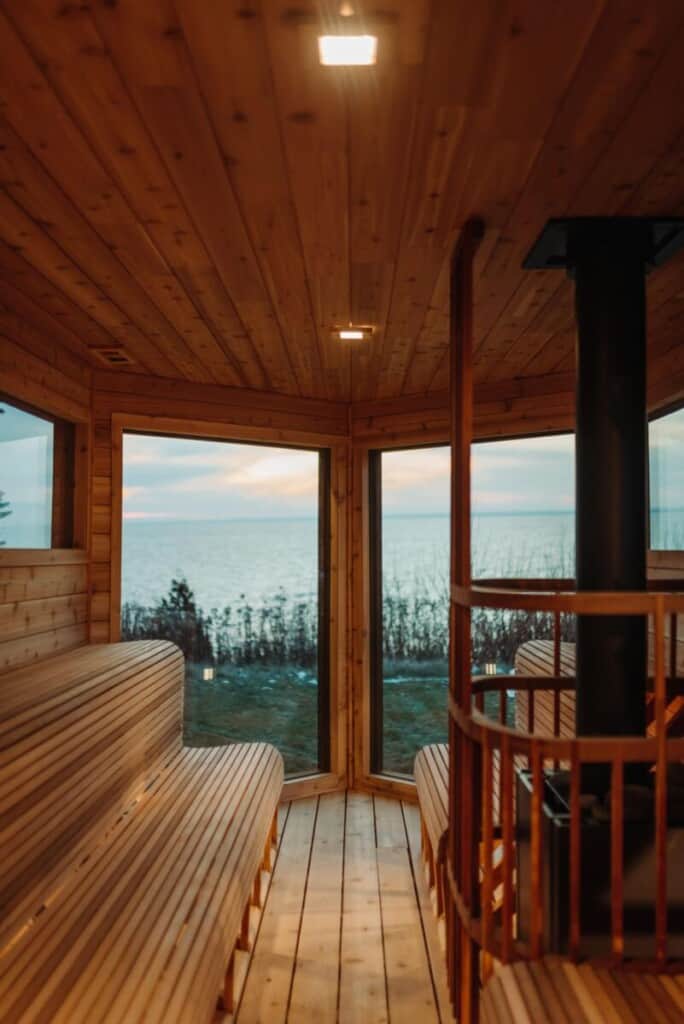
First, through our experiences where we have public and community-oriented saunas and Nordic spas that people can book a session at. You don’t have to buy the whole thing; you can just join for a time. It’s like booking a massage. You can meet people there, you can get connected, you can go jump in the harbor for a cold-water plunge. You can have all this great experience in a number of different places.
Custom-Built Saunas
And then some guests say, Hey, I love that. I want to take that home with me. I would like that in the backyard or at the cabin or in my house. And so we create, design, and build those spaces for people all over the country. Duluth was named by our mayor, Emily Larson, as the sauna capital of North America. That has been put in record and sealed. And it’s something really beautiful to have a place that people want to come to and find these things, these cultural things in their purer form, and then bring them to where they’re at. So we’ve delivered and installed them from San Francisco to Tampa to Boston. And if we can do sauna in Tampa, I think we can do it just about anywhere in terms of it not being a cold weather thing, right? It’s not just a seasonal sport when you’re starting to see the ubiquity of it being all over the place.
Sauna Education
We’re committed to providing experiences, built spaces, and then learning and teaching and storytelling around all that. We do that with our podcast, Sauna Culture, and our YouTube channel. We also train sauna entrepreneurs to come learn with us how to launch a business like that. And they’re launching all over the country right now.
Over the next decade, our goal is to invite a million people into the experience of sauna, because people deserve a more resilient life.
What sauna creates in people is better health and resilience to the stress of the world. It won’t change the world outside of you, but it might change you as you begin to practice this.
Can you share a little more about training other sauna entrepreneurs?
As yoga grew in popularity, it needed guides and yogis to help teach the tradition and the process and the movement. Craft beer needed good breweries to make good beer in all the little communities, so the taste palette for beer in the U.S. went from big-name beer with very little flavor to unique and local and tons of different options. That’s what’s happening in sauna right now.
So, from the get go, we wanted to be a voice that’s trusted around this, and we wanted to care about quality and culture. And so part of the company has been built around educational components for teaching people about the practice of sauna.
And as we do that, we also have had people come and say, ‘Hey, I want to build something like that. Can I join you? Can I learn with you?’ And we say absolutely—come learn with us. So we have a number of programs for entrepreneurial-minded folks who are wanting to say, ‘Hey, I have stressed out people in my town. How do I bring this there?’ And we invite them into either a learning cohort of people—sort of a mastermind of folks that are like that—or some individualized consulting and coaching and training, so they have a lot more support around them. So, when they’re figuring out the design challenges, the legal needs, the operational components, they have a sounding board and a voice. They’re not alone in any of that.
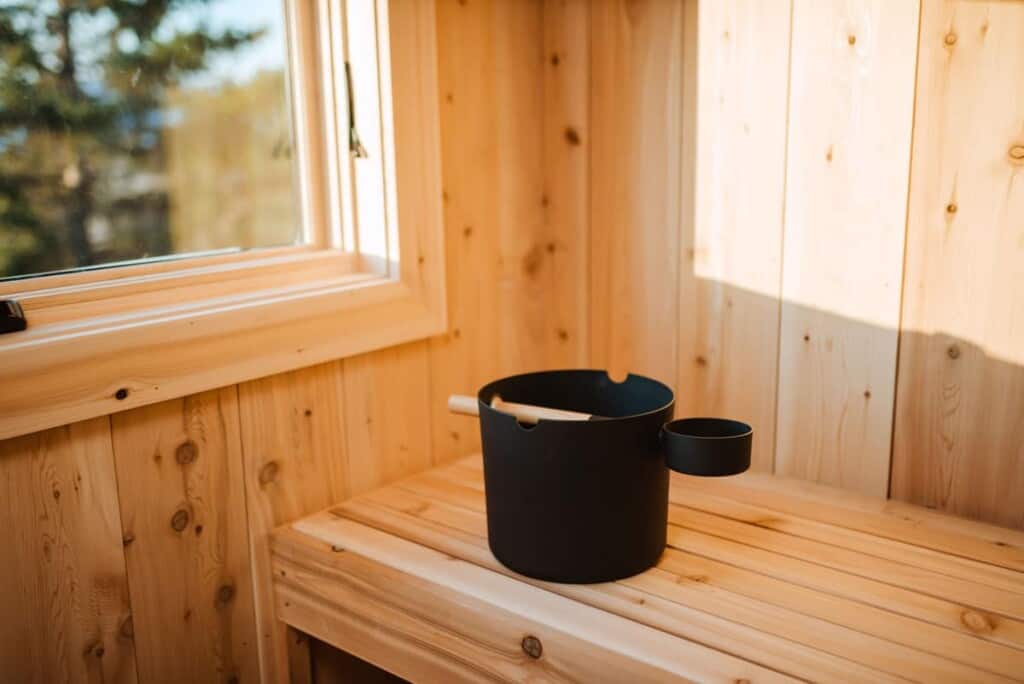
What was the impetus for starting Cedar + Stone?
It’s twofold. One, I’ve grown up with saunas my whole life. My family has carried that tradition. When I was three years old with my dad, I remember building our first sauna, and we just built them at every home and backyard and cabin that we’ve ever had. Sauna was not opulence. It was essential. It was part of our family.
As an adult, I lived both in St. Paul and Pittsburgh before moving to Duluth. Before that move, my wife and I went to Finland. And on this trip, we did all these community saunas, and one was literally floating on the Baltic. We got in this little rowboat with this Finnish guy, and he rowed us out on this raft to sauna and swim and sauna and swim, and it was just magical. And that day was the day I said: People would want this. This tradition that I’ve grown up with, it could be so much more than just a thing for my family and my family’s friends. And that was 10 to 15 years ago.
Since then, we fell in love with Duluth, this place right on the shores of Lake Superior. We fell in love with its entrepreneurial community and the creative community here. And a number of years ago, I said, I think now’s the time. I was doing a lot of inner work and saying, what do I want to put my hands to in these next few decades? Because it’s not a get-rich-quick scheme for me.
It’s much more of, I actually think I’m a bit called to this? I think it’s the thing I’m supposed to do while I’m here, and it’s to introduce more people to saunas.
And I just kept seeing stressed out people—pre-COVID—stressed out people, living in anxiety. And I’m like, I feel weirdly prepared to help people with this. I think now’s the time for the sauna business. I think we need to do it. And I started talking to people like it was real. And my wife was like—Wait, I need to see some numbers. I need to know that this thing works. And so we wrote the 47 page business plan. I was sort of building things under the surface for the two years, and then we launched the experience. Things were great, and then six weeks later a pandemic hit the world. A business designed to welcome folks into a small space, together, for their health is a hard thing in a pandemic.
How did you have to pivot your business after the pandemic shut down the in-person experience?
Starting things is really difficult, and inviting people into this is really difficult. And we did it in a time that was maybe the most difficult. We shut down that experience side of our business for four months. And in those four months, our custom-build side just had an unbelievable amount of gasoline thrown on it and throttled forward. Because, at the same time as people weren’t going out to places or traveling, they were investing in their homes. They were saying, ‘You know what? I want to be with my family. I want to spend better time with them. I want to care about my health more.’ And so we watched that side of our business grow.
And then we were able to reopen with private sessions that were not community oriented—it was just you and your people. Now, coming out of the pandemic, we have these very private, curated, cared for experiences. We give guests this experience of, ‘Wow, I feel so good. I learned something. I met with friends, and we got to connect in a way that was really authentic and real and nice and it didn’t need alcohol to go meet somebody.’
And I’m so proud that we’ve created jobs in Duluth. The thing I’m most proud of is not our great podcast and YouTube channel and Instagram account—though those things are fun and flashy. It’s the fact that we’ve really created some flourishing here in Duluth for people to come live, work, learn, and play. And if you’re here in Duluth for any one of those things, we want to invite you to this tremendous experience of the North. This way to connect to your body. This way to connect to the world around you, connect to the people that you’re with.
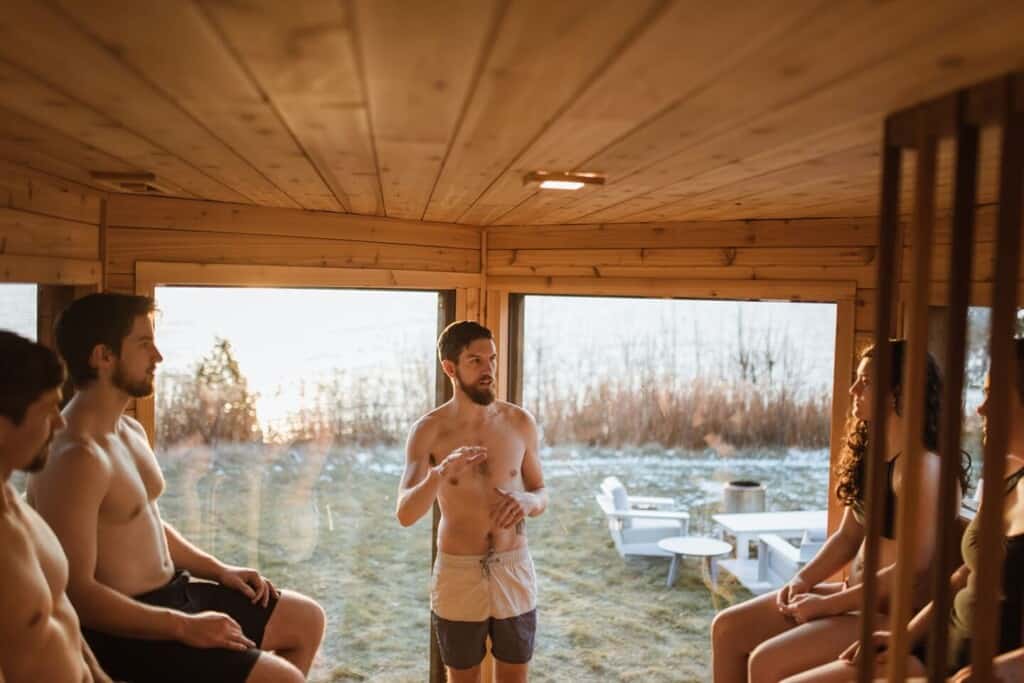
Talk to us about the approach you take on design and considering the aesthetic value of saunas.
I grew up in saunas that were built very simply, with my dad and grandpa. And this phrase kept coming out when we would be building together. It was this very stoic Nordic idea: ‘Good enough for who it’s for.’ That idea—I like its humbleness. But as somebody who cares about beauty and design, what I often desired was a commitment to do the thing more beautifully or more thoughtfully.
As I was looking at the landscape of the sauna-related businesses, I was only seeing these little rustic cabins. I kept thinking, we could do that better. We could do it with an eye toward design and an eye toward the environment. And we could think a little bit more thoughtfully, asking the questions of: What are the best materials? What are the most beautiful? What are the most environmentally friendly materials?
And so, as a part of Cedar and Stone’s ethos and our values, caring for beauty is one of them. Beauty changes us. It actually nourishes us. If we’re about creating beauty, that’s going to be in our experiences—they’re going to be beautiful. When you enter the room, you’re going to enter the space, instead of a small, dark, hot room, they’re beautiful and warm and inviting and spacious and have windows. You can see Lake Superior right outside of them. And that, for some people, is such a change and such an inviting moment.
So to me it’s an essential ingredient for what we do because we care about good design and we care about beauty and we believe that’s good for people. We actually believe that helps the health side of sauna when you have people enjoying a beautiful space in which they are in.
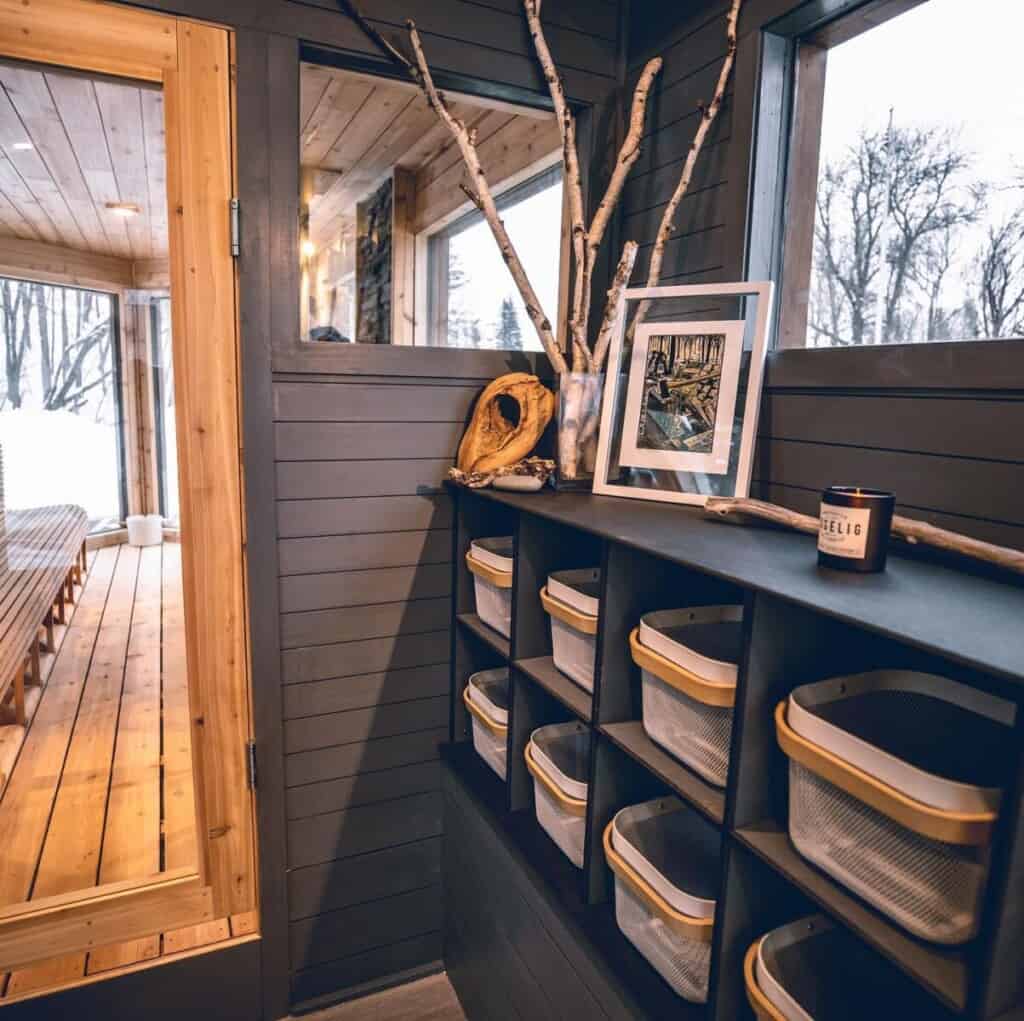
How do you consider sustainability in the design aspect of what you do?
We’re trying to think a lot about where our materials come from, how they’re put together, and where they go. If you look around at the American sauna market, you see a lot that’s shipped across oceans, things chosen just because it’s the cheapest option, labor that is done at its most basic level. How cheap can I get the thing done? The most ubiquitous American sauna is probably the barrel sauna. And it’s because it’s really cheap and easy to make, not because it is the most long lasting, the most beautiful, or the most thoughtfully designed.
When I look at how we’re trying to do things, we’re trying to create an opportunity for folks to experience the quality of heat and design and space and materials that have been sourced intentionally. We care deeply about trying to source materials as close to where we are as possible and using companies that are asking those questions as we do that, and making decisions that then impact the beauty and quality of the longevity of that thing. The people we serve feel good because they know that the people who put their sauna together are here in America. It’s an American-made product with as many American-made goods as possible.
We do work with a couple of Finnish and Nordic providers for some sauna materials because really, that’s the spot where you can get them in the world. There aren’t local sources for that. But we work locally as much as possible. We’re trying to choose providers based on relationship, environment, and beauty all the time.
We care deeply about the environment, we care deeply about the materials we use. We care deeply about how beautiful the thing is, because it isn’t just rocks and timber and water. Those ingredients—matched with beauty, matched with beautiful places and beautiful design—really can create a lot of magic for people. And it’s really good for you. So it’s sort of all the things all at once.
One tie to Puustelli—I love getting to work with companies and partner with companies that care about the environment and good design and have some of these similar values. And who are trying to do good work for people. I see that about Puustelli.
They’re trying to say, ‘How do we make the most beautiful kitchens and cabinets? How do we choose really smart and thoughtful design? How do we create great materials and provide those to folks so that when they make food every night, it’s an enjoyable experience?’ I think that way about sauna, about how our built environments actually do impact us. The spaces in which we live actually form us. And the sauna is one of these spaces that we are most intimately connected to because you’re sitting on the benches, you’re leaning against the walls, you feel the room in a way that you don’t feel very many rooms. And if you’re somebody who can invest in creating the space that you live in, it is an investment in your life and the betterment of the people that you live life with. And I just feel like that’s such an alignment with the work that Puustelli does all the time.
